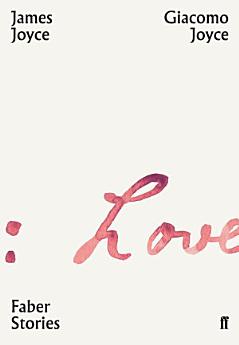Giacomo Joyce: Faber Stories
out. de 2019 · Faber & Faber
Libro electrónico
48
Páxinas
family_home
Apto
info
reportAs valoracións e as recensións non están verificadas Máis información
Acerca deste libro electrónico
Faber Stories, a landmark series of individual volumes, presents masters of the short story form at work in a range of genres and styles.
This heart is sore and sad. Crossed in love?
The manuscript of 'Giacomo Joyce', written in James Joyce's best handwriting and folded between the covers of a school notebook, was discovered in Trieste. Most likely written in 1914, some of it served as a rehearsal for passages in Ulysses. Had Joyce meant to pillage it or publish it? Either way, this fragmented evocation of unrequited desire is, in the words of Joyce's biographer Richard Ellmann, a work of 'small, fragile, enduring perfection'.
With a new introduction by Colm Tóibín.
This heart is sore and sad. Crossed in love?
The manuscript of 'Giacomo Joyce', written in James Joyce's best handwriting and folded between the covers of a school notebook, was discovered in Trieste. Most likely written in 1914, some of it served as a rehearsal for passages in Ulysses. Had Joyce meant to pillage it or publish it? Either way, this fragmented evocation of unrequited desire is, in the words of Joyce's biographer Richard Ellmann, a work of 'small, fragile, enduring perfection'.
With a new introduction by Colm Tóibín.
Acerca do autor
James Joyce was born in Rathgar, Dublin, in 1882. In 1904 he and Nora Barnacle (whom he married in 1931) left Ireland for Trieste. Abroad, free from the restrictions he felt in Ireland, Joyce felt compelled to write of his native land, producing Dubliners (1914) and A Portrait of the Artist as Young Man (1916). During World War I, he lived in Zurich from 1915 to 1919, and in 1920 moved to Paris, where he spent most of the rest of his life. Towards the end of December 1939 James Joyce and Nora Barnacle left Paris for a small village near Vichy and ultimately settled in Zurich, where he died in January 1941. His major works, pioneering the 'stream of consciousness' style, are the novels Ulysses (1922) and Finnegans Wake (1939).
Valora este libro electrónico
Dános a túa opinión.
Información de lectura
Smartphones e tabletas
Instala a aplicación Google Play Libros para Android e iPad/iPhone. Sincronízase automaticamente coa túa conta e permíteche ler contido en liña ou sen conexión desde calquera lugar.
Portátiles e ordenadores de escritorio
Podes escoitar os audiolibros comprados en Google Play a través do navegador web do ordenador.
Lectores de libros electrónicos e outros dispositivos
Para ler contido en dispositivos de tinta electrónica, como os lectores de libros electrónicos Kobo, é necesario descargar un ficheiro e transferilo ao dispositivo. Sigue as instrucións detalladas do Centro de Axuda para transferir ficheiros a lectores electrónicos admitidos.








